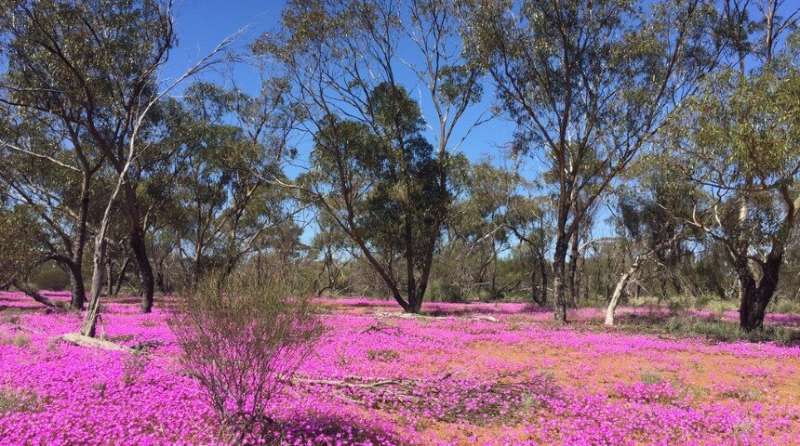Enhancing revegetation of old fields in Western Australia

Wildflowers and native grasses are needed to boost revegetation in Western Australia's northern wheatbelt, according to new research from the Centre for Terrestrial Ecosystem Science and Sustainability at Murdoch University's Harry Butler Institute.
Results from a new study led by Murdoch University Ph.D. candidate, Tina Parkhurst, found herbaceous plants—those without a woody stem—were the missing component in revegetation sites once dominated by cropping and grazing.
"Ecological restoration is extremely important for maintaining our biodiversity, especially the unique species we have here in Western Australia," Ms Parkhurst said.
"However, our research has shown that sites of unproductive agricultural land aren't recovering to their native eucalypt woodlands and woody shrublands in semi-arid Western Australia, even ten years after restoration.
"Major barriers to restoring old fields in this region are elevated soil nutrients and limited native seed availability due to undeveloped soil seed banks, limited seed dispersal, seed and seedling predation from ants and agricultural pests."
Old fields are often difficult to restore due to the extensive modification of soil properties and vegetation communities following cultivation, resulting in the degradation of these key ecosystem components.
"Most revegetation projects focus on planting mid- and overstorey vegetation such as trees and shrubs, which increases native plant diversity," Ms Parkhurst said.
"But they're missing the smaller, yet significant components of these ecosystems like everlastings, native herbs and grasses."
Herbaceous species play an important role for maintaining biodiversity in Western Australia. They contribute more than half the plant species richness in herb-rich woodlands and provide habitat and food resources for animals.
"They are also important from an economic point of view, attracting many visitors to regional Western Australia during the wildflower season," Ms Parkhurst said.
"To date very few restoration projects have attempted to include native everlastings and other annuals in standard revegetation methods, but we are hoping to change this in the near future."
The next phase of the research will see the development and testing of revegetation methods that include herbaceous species to trial if we can return abandoned agricultural land to its original woodland state.
Ms Parkhurst said the end goal is to achieve a near complete recovery of these abandoned ecosystems.
"This will require innovative research to return these old fields to species rich and resilient woodlands."
More information: Tina Parkhurst et al, Recovery of woody but not herbaceous native flora 10 years post old‐field restoration, Ecological Solutions and Evidence (2021). DOI: 10.1002/2688-8319.12097
Provided by Murdoch University




















